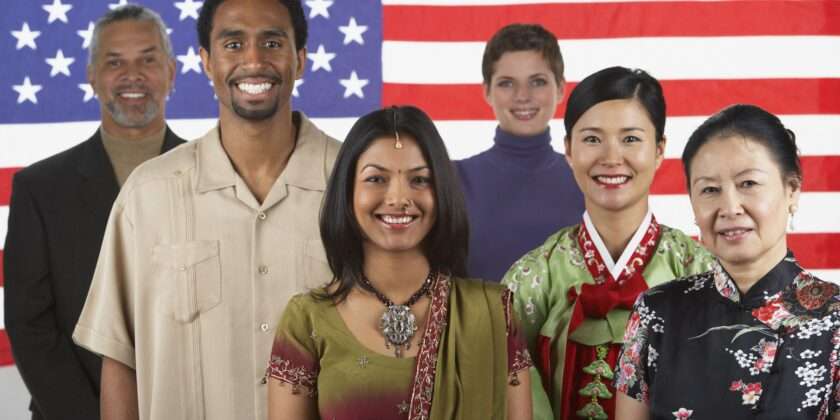“It is another’s fault if he be ungrateful, but it is mine if I do not give. To find one thankful man, I will oblige a great many that are not so.” This quote by Lucius Annaeus Seneca shows the love of humanity by the United States Civil Rights Movement. Leaders like Dr. Martin Luther King, Jr., A. Philip Randolph1 and Rosa Parks2 worked to make America a better place to live for everyone.
The fight for equality was extended to the U.S. Immigration Act of 19653, which changed the ethnic composition of America. The previous law, the Emergency Quota Act of 19214, restricted immigration from Asia and Africa while maintaining preferred status to Northern and Western Europeans. The Office of the Historian of the United States bluntly states the effect of this law on people from Asia:
The 1924 Immigration Act also included a provision excluding from entry any alien who by race or nationality was ineligible for citizenship. The existing nationality laws dating from 1790 and 1870 excluded people of Asian lineage from naturalizing. As a result, the 1924 Act meant that even Asians not previously prevented from immigrating – the Japanese in particular – would no longer be admitted to the United States. Many in Japan were very offended by the new law, which was a violation of the Gentlemen’s Agreement5. The Japanese government protested, but the law remained, resulting in an increase in existing tensions between the two nations. Despite the heightened tensions, it appeared that the U.S. Congress had decided that preserving the racial composition of the country was more important than promoting good ties with Japan.
In all of its parts, the most primary purpose of the 1924 Immigration Act was to preserve the ideal of U.S. homogeneity.
“Nobody’s free until Everybody’s free”
This quote by Fannie Lou Hamer6 was the mindset of the African American leaders. They had experienced the harmful effects of discrimination and wanted to end it for everyone.
Jay Harold found an article by the Migration Policy Institute7 that speaks of the role of Civil Rights in immigration reform. The article states that many scholars assert the demise of the national-origins quotas was driven by the U.S. civil-rights movement, which sought to end racial segregation in the United States and make social discrimination by race illegitimate. For example, the 1965 act was described as “The Civil Rights Revolution Comes to Immigration Law,” in legal scholar Gabriel Chin’s account. Policymakers explicitly linked passage of the legislation to the civil rights narrative. In 1964 Attorney General Robert F. Kennedy declared, “Everywhere else in our national life, we have eliminated discrimination based on one’s place of birth. This system is still the foundation of our immigration law.” The landmark immigration law passed just a year after the Civil Rights Act of 1964 and the same year as the Voting Rights Act. This article argues that while the civil-rights movement may have influenced the creation of the 1965 act, the demise of the national-origins quota system was fundamentally driven by geopolitical factors.
The fact that African Americans played any role in the Immigration Act of 1965 is unknown to many Americans today. Many immigrants have prospered in the United States and feel that their hard work was the only reason they found success.
Asians are the largest group of Immigrants to U.S.
An article by the New York Times8 states that in 2010, Asians surpassed Hispanics as the largest wave of new immigrants to the United States. About 430,000 Asians — or 36 percent of all new immigrants, legal and illegal — moved to the United States in 2010, compared with 370,000 Hispanics, or 31 percent of all new arrivals, the study said. Just three years earlier, the ratio was reversed: about 390,000 Asians immigrated in 2007, compared with 540,000 Hispanics.
The Pew Research Center9 states that 1.8 million African immigrants were living in the U.S. in 2013. This rise is a significant increase from 881,000 in 2000 and a substantial increase from 1970 when the U.S. was home to only 80,000 foreign-born Africans. They accounted for 4.4% of the immigrant population in 2013, up from 0.8% in 1970.
African Americans Protects the Civil Rights of Immigrants
African Americans are sometimes viewed in a negative way by the immigrant community. African Americans are the shield that protects the civil rights of immigrants and everyone else in America. Pearl Buck said, “If you want to understand today, you have to search yesterday.” How many immigrants know the important role African Americans played in their journey to America?
Click this link to get free Health and Wealth information to improve your life. Play the free “Slow Roll Through Civil Rights” Game found on the Jay Harold website. Enjoyed this post? Share it and read more here.
Bibliography
- http://apri.org/387-3/
- https://en.wikipedia.org/wiki/Rosa_Parks
- https://en.wikipedia.org/wiki/Immigration_and_Nationality_Act_of_1965
- https://history.state.gov/milestones/1921-1936/immigration-act
- https://history.state.gov/milestones/1899-1913/japanese-relations
- http://www.howard.edu/library/reference/guides/hamer/
- http://www.migrationpolicy.org/article/geopolitical-origins-us-immigration-act-1965
- http://www.nytimes.com/2012/06/19/us/asians-surpass-hispanics-as-biggest-immigrant-wave.html?_r=1
- http://www.pewresearch.org/fact-tank/2015/11/02/african-immigrant-population-in-u-s-steadily-climbs/





